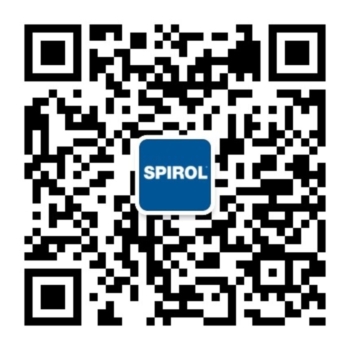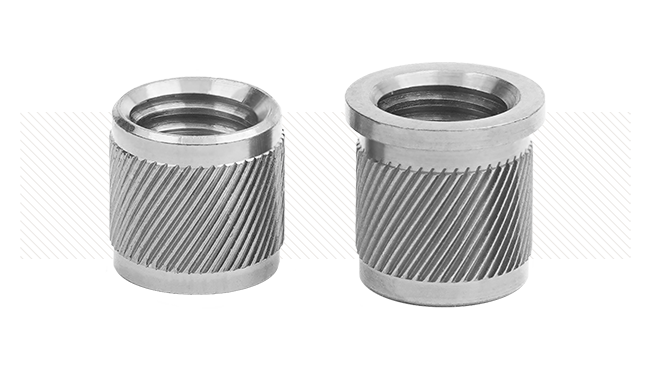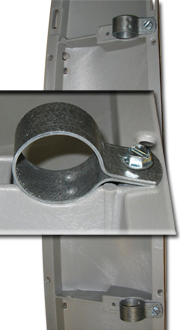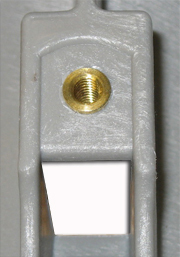Ski Lift – Bar Mounted Media / Map Rack
The customer was using a thread cutting screw to fasten a map rack to the safety bar of a ski lift. The application requires seasonal removal and the repeated cycle of installation and removal led to failure of the plastic boss. The customer approached SPIROL for assistance in determining the best alternative solution that would provide a reusable thread. SPIROL Engineering evaluated the customers assembly and identified a number of issues which had led to the reported failures, as well as a solution.
Thread cutting fasteners are only intended to be used once. Repeated installation and removal causes excessive hole wear and premature failure. Though this is the primary cause of failure, other conditions also contributed. The component host material was HDPE, or high density polyethylene plastic. This material retains good flexibility and impact resistance in cold weather though it is prone to a condition known as creep. Creep is a material’s tendency to move opposite the direction of induced stress until that stress is relieved. For this reason, much of the retention achieved when directly threading a fastener into this material is lost over time. The best solution to this problem is an insert which has been installed in the mold or post-mold heat installed. Because the host material is fluid in the mold, or returned to a fluid state in post-mold heat installation, there is no residual stress about the circumference of the insert. Further, the integrity of any fastener/plastic joint is the product of the host material’s strength. For this reason, the increase in diameter of the insert when compared to the threaded fastener equates to a much greater volume of host material trapped within the inserts external features. This would contribute to a dramatic increase in performance. The remaining benefit of a brass insert is the elimination of wear between the fastener thread and plastic. As all movement of the fastener occurs within the insert, the interface between the insert and host material remains unaffected by repeated assembly/disassembly.
In addition to noting the problems associated with the self-threading fastener, SPIROL Engineering observed that the customer’s design would place the insert in jackout. Jackout is a condition that occurs when an insert is subject to rotational torque and pulled into a void simultaneously. This lends inordinate mechanical advantage to the fastener which can lead to premature failure of an insert. This condition existed as the result of clearance between the bracket and insert face. A headed insert was chosen as it reduced the clearance between bracket and insert thus confining applied force to rotational torque.
SPIROL replaced the problematic self-threading screw with a molded-in high performance INS 30. This solution eliminated the effect of creep on long term performance, provided a reusable thread, and reduced the clearance between the bracket and insert face thus eliminating a jackout condition. The result is an assembly which can be assembled and disassembled as often as the customer requires while providing much greater performance.
Complimentary Applications Engineering Support: SPIROL Engineers will review your application needs and work with your design team to recommend the best solution.
Additional Resources
Why Should You Partner with SPIROL?
Our core purpose is to be a resource that facilitates the reduction of your assembly costs, improves your product quality and enhances your overall competitiveness. In addition, SPIROL offers:



 LOCATIONS
LOCATIONS USA
USA  Canada
Canada  United Kingdom
United Kingdom  Deutschland
Deutschland  México
México  Brasil
Brasil  Česká republika
Česká republika  France
France  España
España  한국
한국 

